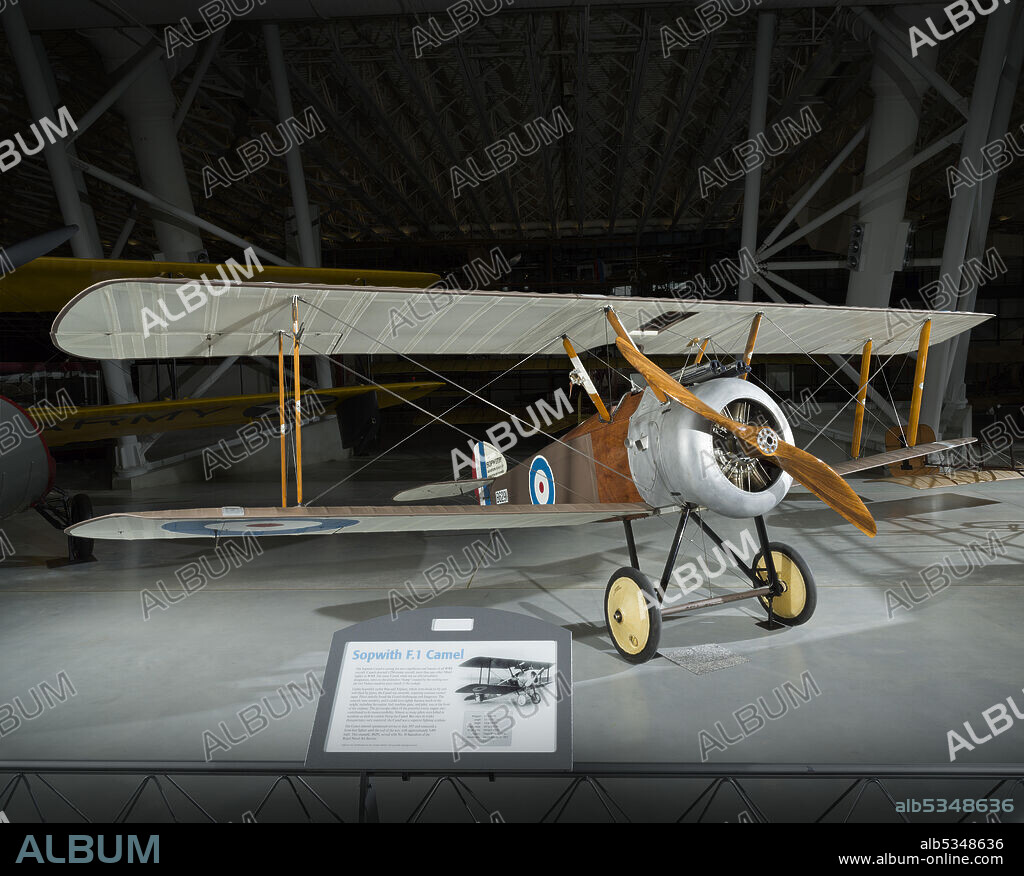alb5348636
SOPWITH AVIATION COMPANY. Sopwith F.1 Camel, ca. 1917. Creator: Sopwith Aviation Company.

|
Añadir a otro lightbox |
|
Añadir a otro lightbox |



¿Ya tienes cuenta? Iniciar sesión
¿No tienes cuenta? Regístrate
Compra esta imagen.
Selecciona el uso:

Autor:
Título:
Sopwith F.1 Camel, ca. 1917. Creator: Sopwith Aviation Company.
Descripción:
Ver traducción automática
Single engine, single-seat, WWI biplane fighter, with 130 HP Clerget 9B rotary engine. The Sopwith Camel is among the most significant and famous of all WWI aircraft. Camels downed 1,294 enemy aircraft, more than any other Allied fighter in WWI. The cowling over the two Vickers machine guns ahead of the cockpit created a distinctive “hump,” making the name Camel a natural choice, although it was never an official military designation. Unlike the earlier Sopwith Pup and Sopwith Triplane, which were docile to fly and well-liked by pilots, the Camel was unstable, requiring constant input from the pilot. The gyroscopic effects of its powerful rotary engine made it dangerous for novice pilots, and almost as many were killed in accidents as died in combat. But its instability also contributed to it being agile and maneuverable, and once its tricky characteristics were mastered, the Camel was a superior fighting airplane. The Camel entered operational service in July 1917 and remained a front-line fighter until the end of the war, with approximately 5,490 built. This example, B6291, served with No. 10 Squadron of the Royal Naval Air Service.
Personas:
Crédito:
Album / Heritage Art/Heritage Images
Autorizaciones:
Modelo: No - Propiedad: No
¿Preguntas relacionadas con los derechos?
¿Preguntas relacionadas con los derechos?
Tamaño imagen:
10815 x 8692 px | 268.9 MB
Tamaño impresión:
91.6 x 73.6 cm | 36.0 x 29.0 in (300 dpi)
Palabras clave:
AVIACION • AVION BIPLANO • AVION • AVIONES • BIPLANO • BRITANICO • COLOR • COLORIDO • CONCEPTO • DÉCADA DE 1910 • EDUCACION • GRAN BRETAÑA • GUERRA MUNDIAL I • GUERRA • METAL • NATIONAL AIR AND SPACE MUSEUM • OBJETO • PRIMERA GUERRA MUNDIAL • SIGLO XX • SIGLO • SMITHSONIAN INSTITUTION • SOPWITH AVIATION COMPANY • TECNOLOGÍA • TRANSPORTE AEREO • TRANSPORTE • VUELO • WW1
 Pinterest
Pinterest Twitter
Twitter Facebook
Facebook Copiar enlace
Copiar enlace Email
Email
